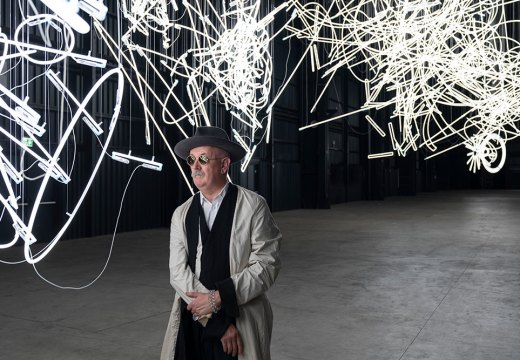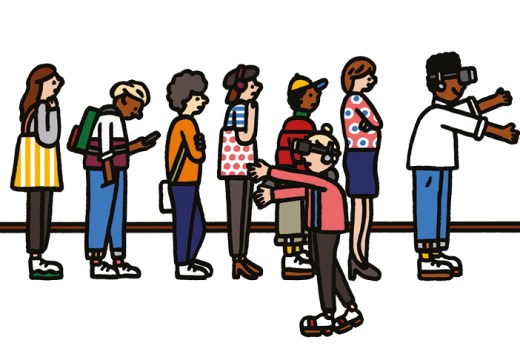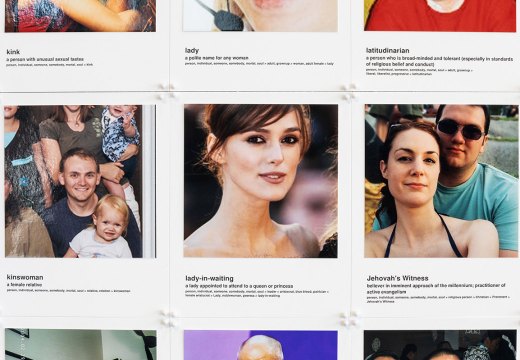It can take some time to find the Edith-Russ-Haus for Media Art from the train station, but then again Oldenburg is not really a place you’d expect to find an internationally significant media art institution at all. A small rural city of 170,000 residents founded on agricultural industries, Oldenburg is a historically conservative place, infamous for being the first German region to vote the National Socialists into parliament in 1932. That traditional atmosphere has changed greatly since the 1970s, due in part to the founding of the Carl von Ossietzky University, and Oldenburg has become quite a liberal and culturally lively place in recent decades.
Edith Russ played no small role in the city’s cultural transformation. An art journalist and collector who later became a teacher for children with special needs, Russ donated some two million Deutschmarks towards the foundation of a new institution in Oldenburg that would, in the words of its current co-director Marcel Schwierin, ‘look into the future of the arts, not backwards’. Russ was a woman with a strong vision for the new museum, one that came with a number of requirements. She died in 1993 and stipulated in her will that the gallery must be opened on 1 January 2000, or not at all. She also insisted that the institution maintain a guest house, an artist’s studio and a seminar room. It’s a mandate the museum has upheld, allowing the Haus to maintain a media art grant programme that provides three visiting artist residencies a year.
I made the journey to the Edith-Russ-Haus from Hamburg to see a solo show by the American-born, London-based artist Zach Blas, an emerging figure on the digital art scene who had his first solo show, ‘Contra-Internet’, at Gasworks in London in 2017. Blas’s exhibition in Oldenburg, ‘The Unknown Ideal’, is his largest yet and features the newly commissioned installation The Doors (2019) – a multimedia exploration of artificial intelligence, Californian counterculture and the rise of performance-enhancing drug use in Silicon Valley. This is work that is provocatively out of step with its current setting in rural Oldenburg.

The Edith-Russ-Haus for Media Art in Oldenburg, 2019
Walking into the exhibition space, in a Mies van der Rohe-inspired red brick building, you are immediately confronted with Blas’s new work. In the centre of the room stand a few potted plants and a display case filled with a vast assortment of ‘nootropics’ – neural enhancing ‘smart drugs’ currently popular among tech industry workers in California. Across six hanging screens, a digitally animated lizard moves in and out of view delivering spoken word verses generated by an AI machine-learning system trained on the poetry of Jim Morrison, the ‘Lizard King’ himself. The poetry-reciting lizard is interspersed with abstract morphing images generated by yet another machine-learning system, this time trained on psychedelic rock posters, LSD blotter art and the sacred geometry often used in the marketing of nootropics.
The subterranean lower floor of the museum contains a retrospective of Blas’s previous works and descending below ground to see them is somehow appropriate. Blas, after all, is an artist who explores the darker and more disturbing regions of contemporary online culture. Present here are the artist’s projects of the past decade, work populated by racist Microsoft chat bots, ‘face cages’ that replicate the biometric diagrams of surveillance technology, and a fortune-telling, dark elf version of the tech entrepreneur Peter Thiel. These and other images produced by Blas seem to slither up from the depths of our digital unconscious.

Face Cage 4 (2016), Zach Blas, performance with Paul Mpagi Sepuya. © Zach Blas, 2016
The Blas exhibition is indicative of the museum’s talent for showing emerging digital and media artists at key moments in their careers. Schwierin, who since 2015 has co-directed and co-curated the Edith-Russ-Haus with Edit Molnár (they are also a couple), explains, ‘We want to make exhibitions where it also makes a huge difference for the artist.’ The gallery’s list of past artists is impressively diverse, not always a given for digital and media art institutions. The roster includes Finnish performance artist Pilvi Takala, the Singaporean video artist and theatre director Ho Tzu Nyen, and the Berlin-based Iranian artist and film-maker Shirin Sabahi. This is all part of an effort, Schwierin suggests, to bring an awareness of the international art scene to this small corner of northern Germany, ‘We don’t have any wish to represent the local surroundings’.
A London connection is noticeable in the institution’s recent programming. In addition to Blas, the gallery has hosted London-based artists Sonia Boyce, Noor Afshan Mirza and Brad Butler. Meanwhile, Takala’s video installation The Stroker, displayed over the summer in the town’s Pulverturm (a historic domed, brick gunpowder store), documents the artist’s two-week long intervention at Second Home, a trendy East London co-working space, where she posed as a wellness consultant. Takala spent the fortnight providing ‘touching services’ in the workplace, greeting and lightly stroking the shoulder of confused tech workers as they passed by. Schwierin claims the museum is chiefly interested in addressing the wider social impact of media and technology and artists like Blas and Takala clearly respond to that imperative.

The Doors (video still; 2019), Zach Blas. © Zach Blas, 2019
‘Zach Blas: The Unknown Ideal’ is at the Edith-Russ-Haus for Media Art until 5 January 2020.
Unlimited access from just $16 every 3 months
Subscribe to get unlimited and exclusive access to the top art stories, interviews and exhibition reviews.














![Masterpiece [Re]discovery 2022. Photo: Ben Fisher Photography, courtesy of Masterpiece London](http://www.apollo-magazine.com/wp-content/uploads/2022/07/MPL2022_4263.jpg)
It’s time for the government of London to return to its rightful home